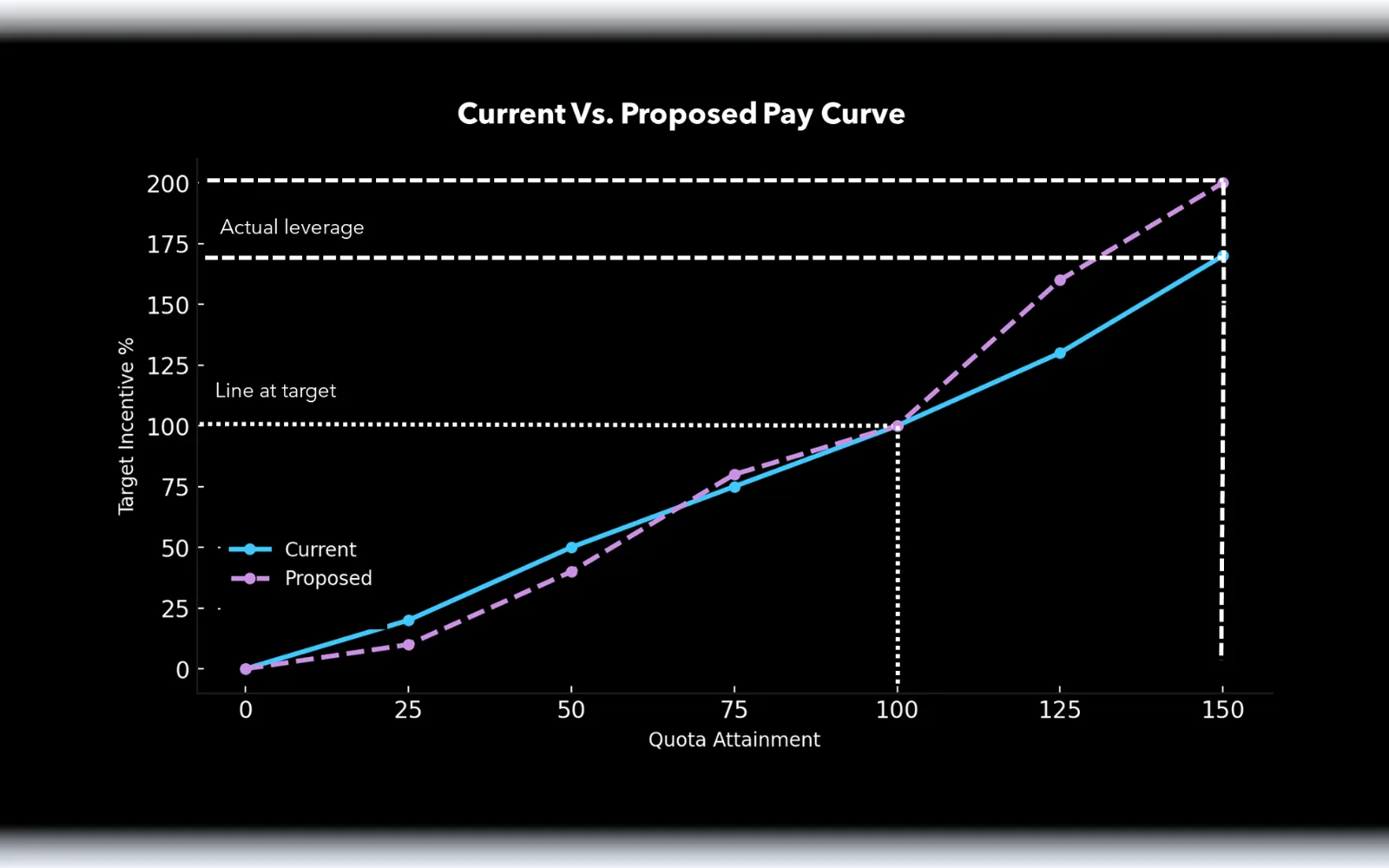Sales organization design case study
SaaS company boosts opportunity value by 40% with competitive compensation
The challenge
Is our sales strategy built to attract and retain top talent?
As they prepared for the 2022 fiscal year, a software company introduced a new sales coverage model for its top-tier accounts and newly acquired product. To enhance selling capabilities, they created both account management and enterprise selling roles. But leadership faced key concerns—were their sales strategy, territory design, and compensation plans competitive enough? Their existing model lacked pay-for-performance, making it harder to recruit and retain top talent in a competitive market. To drive fast growth and improve hiring appeal, they needed a refined compensation plan that aligned sales incentives with business objectives.
The objective
Driving sales performance through better compensation
By partnering with Marketbridge, the client recognized that a revised pay-for-performance plan could drive stronger sales beyond target metrics—especially for strategic products. An updated model would enable higher target attainment while making the company more competitive in recruiting top enterprise and strategic sales talent. Expanding these roles would not only enhance the customer experience but also increase sellers’ earning potential—all while keeping costs neutral.
The solution
Four-step approach to balancing sales incentives, cost, and performance
Step 1: Post-acquisition integration
Marketbridge helped integrate the client’s newly acquired product and existing product sales team into the global commercial organization to drive incremental growth while minimizing disruption to the legacy team. In addition, they validated their current go-to-market engagement model with the new enterprise and specialist selling roles.
Step 2: Compensation design
Given the current alignment of strategy and information obtained in the baseline assessment, Marketbridge designed new compensation plans for the newly created enterprise and strategic selling roles. The pay acceleration feature of these new plans not only incentivized the sales team to exceed their targets, but also increased incentives to focus on selling strategic products, accelerating growth in those areas, as well as improving overall quota attainment.

Step 3: Cost projections
To simulate the cost of the new compensation plan to the client, Marketbridge developed a model that utilized a log linear regression to model real world target attainment. By looking at total payout costs for the client in low, target, and high-performance scenarios, it was shown that new compensation plans would save the client money in low performing situations. Additionally, the updated plans had a very strong E/R ratio regardless of attainment level and showed very low incremental cost of employment.
Step 4: Implementation
To facilitate the effective implementation of new compensation designs, Marketbridge laid out an outline for the client detailing key requirements for a successful launch—such as systems integration, sales playbooks, and training on the new plans. Integration of new plans into compensation management and administration was also a key to success on the managerial level. Additionally, Marketbridge created enablement materials to drive improved performance and engagement of the sales team.
Business impact
Accelerated revenue growth and talent acquisition
By aligning incentives with performance, the client drove revenue growth, improved retention, and gained a competitive edge in hiring—all while keeping costs low.
Competitive hiring excellence
With the new pay-for-performance plan, the client attracted top enterprise sellers, tripled their specialist team, and earned a spot on Fortune’s 100 Best Companies to Work For.
Cost-neutral implementation
Despite higher payouts for top performers, the client lowered costs, with sales and marketing expenses under 20% of revenue in Q4 2022—driving both customer and revenue growth.
40% value growth
New incentives drove a 35% boost in bookings, a 40% jump in opportunity value, and 60% YoY growth in strategic products. The executive seller role also improved support and retention.